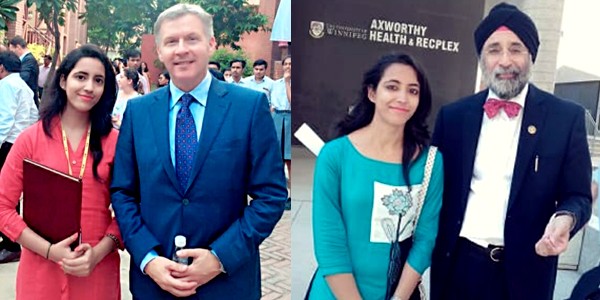Every organisation thrives to create high efficiency and super effective manpower to remain competitive. This makes creating organizational citizens more imperative and important.
An organizational citizen voluntarily does the extra efforts for the company not only because of the job contract.
Organizational citizenship behaviour has been studied since the late 1970s. In more than 30 years of this concept’s existence, it has substantially gained the interest of organisation leaders and academia. Organizational citizenship has been very closely linked with the overall effectiveness of the organisation; thus, organisational citizens play a very important role and have positive consequences in the workplace.
IILM has been a pioneer in developing organisational citizens with its very professional work culture where every member works as a part of a team. The culture at IILM naturally develops and motivates each and every member to deliver the best out.
Organ (1988) defines Organisational Citizenship Behaviour as “individual behaviour that is discretionary, not directly or explicitly recognized by the formal reward system, and that in the aggregate promotes the effective functioning of the organization”
An Organizational Citizen can be defined as the one who possesses these five behavioural characteristics:
 1. Altruism: It can be defined as discretionary behaviours that have the effect of helping a specific colleague with an organizationally relevant task or problem.
1. Altruism: It can be defined as discretionary behaviours that have the effect of helping a specific colleague with an organizationally relevant task or problem.
2. Courtesy: Courtesy has been defined as discretionary behaviours that aim at preventing work-related conflicts with others (Law et al., 2005). This dimension of the organisational behaviour relates to helping behaviour and also keeps preventing the problems. Courtesy is a basic human value that makes him more helpful and understanding towards fellow citizens.
3. Conscientiousness: It consists of the behaviours that go well beyond the defined job role requirements. Every employee of the organisation accepts and adheres to the rules, regulations, and procedures of the organization. Every member of the team takes ownership of all the rules and procedures as the decision process has been effectively collective endeavours.
4. Civic virtue: Responsible participation in the political processes of an organisation. It can be understood as a positive involvement in the concerns of the organisation. Civic virtue can be seen in an individual who takes an interest in the affairs of the organisation and keeps up-to-date with the developments and processes of it.
5. Sportsmanship: It can be defined as tolerating the inconveniences and annoyances of organisational life. No organisation can make perfectly suitable rules and policies for every employee and this should be understood by an organisational citizen. One who is ready and happy to stand with the organisation and serve beyond his defined role overlooking the inconveniences is an ideal organisational citizen.
These characteristics can be developed in an employee by having good practices at the work place and motivating such behaviours by rewarding them. There are alot of tools for doing so in an organisation that starts right away from the hiring process to induction, training, and setting goals that motivate the incoming employee.
Since Organisational Citizen is beneficial for any organisation, it becomes important to consider the factors which affect it. These antecedents can be broadly categorised into three major areas: personality/traits, attitudinal, and leadership/group factors. Among the three personalities has a minimal effect on the tendency to becoming organizational citizen however it does mean that some staff will be more naturally inclined to such behaviour. The other two are more promising as the attitude can be cultivated and leadership can be developed by facilitating more employee engagement.
These antecedents make a guideline to create organizational citizen in any organization through various steps as:
• Job Embeddedness: It is a reflection of the extent to which people are connected in a social web either in an organisation (‘on-the-job’) or in a community (‘off-the-job’).There are three aspects of embeddedness visually, Links: the extent of links to other people or activities,Fit: the extent of fit of their jobs and communities and Sacrifice: the ease with which links could be broken
• Setting examples: The leaders must set an example for the behaviours they want their employees to exhibit. It is well said that cultures are made at the top. Leaders must exemplify being considerate, jumping to help others, putting forward themselves in the events outside the job etc. This will help employees engage into a frame of reference to develop them into organisational citizens.
• Encourage teamwork: Strong co-worker bonds and good interpersonal relationship put a significant impact on employees. People tend to turn into organisational citizens when there is cohesion between them and they feel connected to each other. A culture of collaboration and cooperation must be seeded early so that employees see themselves playing a vital role in supporting co-workers. Job roles must be defined such that they are encouraged to look out for a team which in turn enhances qualities like altruism and courtesy.
• Connect the qualities of Organizational citizenship with company goals: principles of organisational citizenship like altruism, courtesy, civic virtue, conscientiousness and sportsmanship must be linked in any form with the company goal in any verbiage. This will encourage the employees to get into the culture and show the traits as their duty.
• Office social environment: Employees must be given an environment of work that nourishes the organisational citizenship behaviour. Group norms should be made in such a way that encourage the employees to positively interact with each other, attend office functions, seek help, and do help others, etc.
• Supervisor awareness: Training the supervisors about organisational citizenship will help them to look for such traits in the team members and reward them to encourage others to follow. This can be done by adding the OC traits into the appraisal as well. Continuous positive feedback by the supervisor will make more organisational citizen in the team.
• Hiring practices: Though we had learned earlier in the article that the impact of personality on the organisational citizenship behaviours in very low but an outgoing, enthusiastic employee with a positive outlook will be more prone to turn into an organisational citizen. So during the hiring process psychometric testing for such traits must be considered. This is the best stage to look for people who can easily be moulded into organisational citizens.
• Leadership and procedural justice: There must be unit-level organisational citizenship which depends on two variables fairness perception and leadership. An organisational citizen is defined by altruism (helping behaviour) and conscientiousness. Unit level OC is defined by overall OC ratings of the individuals and a unit rating from the supervisor. It is the moral responsibility of the leader towards the success of the organisation as well as the individual success of his subordinates. This gives a feeling of justice to the employees and encourages them to turn into organisational citizens.
At IILM we follow the above points to develop and nurture the organisational citizen in all our staff. Every individual in the institution shows a high degree of traits defined for being an organisational citizen. They go beyond the traditional role definitions or job descriptions. Each member of the team does ‘extra effort’ that is nonetheless essential for the effectiveness of the institution, especially where organisational performance is dependent on the interconnectedness and social networks. Through years IILM has developed its social capital and that translates into its competitive advantage.
References:
1. Law, S. K., Wong, C., & Chen, X. Z. (2005). The construct of organizational citizenship behavior: Should we analyze after we have conceptualized? In D. L. Turnipseed (Ed.), Handbook of organizational citizenship behavior (pp. 47–65). New York: Nova Science Publishers.
2. Organ, D. W. (1988). Organizational Citizenship Behavior – The Good Soldier Syndrome. (1st ed.). Lexington, Massachusetts/Toronto: HD.C. Heath and Company.
Dr. Anjali Jindal
Assistant Professor, IILM Graduate School of Management
Greater Noida, UP





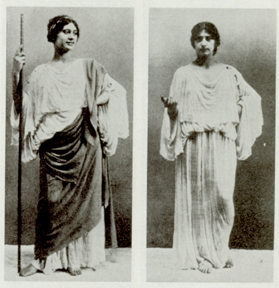





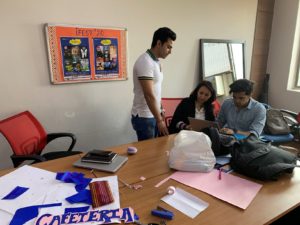



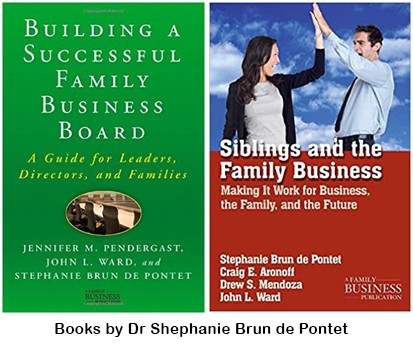
 Core purpose is an organisation’s most fundamental reason for being. It should not be confused with the company’s current product lines or customer segments. Disney’s core purpose is to make people happy – not build theme parks and make cartoons. Theme parks or cartoons or any other product will flow from the core purpose.
Core purpose is an organisation’s most fundamental reason for being. It should not be confused with the company’s current product lines or customer segments. Disney’s core purpose is to make people happy – not build theme parks and make cartoons. Theme parks or cartoons or any other product will flow from the core purpose. Giving example of a company and how it has adapted its business in the current corona crisis by reinventing itself she spoke about J W Lopes, a 4th generation family owned suppliers of produce and dairy to restaurants and institutions. It has changed its business model shifting from institutions to residential distribution by configuring the new way of distribution channel. The company has rightly assumed that people are spending more time trying out new dishes at home and that they would like to have new fresh produce and dairy products. New ideas and experimentation are needed to survive and thrive in the new normal.
Giving example of a company and how it has adapted its business in the current corona crisis by reinventing itself she spoke about J W Lopes, a 4th generation family owned suppliers of produce and dairy to restaurants and institutions. It has changed its business model shifting from institutions to residential distribution by configuring the new way of distribution channel. The company has rightly assumed that people are spending more time trying out new dishes at home and that they would like to have new fresh produce and dairy products. New ideas and experimentation are needed to survive and thrive in the new normal.
 1. Altruism: It can be defined as discretionary behaviours that have the effect of helping a specific colleague with an organizationally relevant task or problem.
1. Altruism: It can be defined as discretionary behaviours that have the effect of helping a specific colleague with an organizationally relevant task or problem.

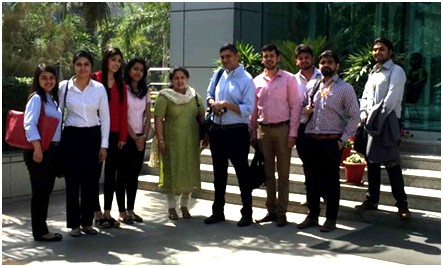
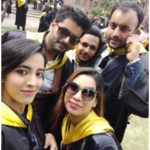 We were exposed to industry and their working style as IILM regularly organized industry visits, conferences attended by industry leaders, invited international guest faculty and internships. All these activities made us corporate ready by increasing our understanding of how the real-world works. The learning in the classroom and beyond had a long-lasting impact on my professional choices, decisions, and journey.
We were exposed to industry and their working style as IILM regularly organized industry visits, conferences attended by industry leaders, invited international guest faculty and internships. All these activities made us corporate ready by increasing our understanding of how the real-world works. The learning in the classroom and beyond had a long-lasting impact on my professional choices, decisions, and journey.